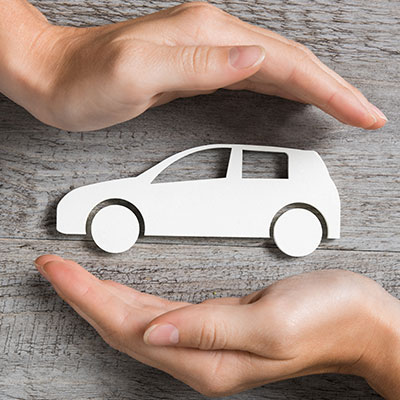Car insurance protects you financially when accidents happen. However, carrying too little coverage can leave you paying out of pocket for vehicle repairs, medical bills, and even legal claims. Many drivers only purchase the minimum coverage required by law, but those limits often fall short when serious accidents occur.
How much car insurance do you need to ensure you’re fully protected? The answer depends on many factors. Below, we explore coverage requirements, factors that influence your policy decisions, and strategies to save money while maintaining adequate protection.
If someone else caused a car accident that left you with injuries or financial losses, speaking with a car accident lawyer can help you understand your rights and options to recover compensation. They can also fight for you to ensure you receive the financial recovery you need to move forward.
Understanding car insurance requirements
Car insurance laws vary by state, but every driver needs at least the minimum coverage required where they live. While these minimums ensure drivers meet legal obligations, they rarely provide enough financial protection after an accident. Carrying only the bare minimum can leave you paying significant out-of-pocket costs if a crash causes serious injuries or extensive property damage.
State minimum requirements and why they’re often insufficient
Every state sets its own car insurance requirements. Some states follow an at-fault system, where the driver responsible for the accident pays for damages. Others use a no-fault system, requiring drivers to carry Personal Injury Protection (PIP) coverage to pay for their medical expenses, regardless of fault.
Using Virginia as an example, the state requires drivers to carry at least:
- $30,000 per person for bodily injury liability
- $60,000 per accident for bodily injury liability
- $20,000 per accident for property damage liability
These limits increased in 2025 from the previous 25/50/20 minimums. Even with higher requirements, though, they often fall short in serious accidents. For instance, medical bills for a single injured person can quickly exceed $30,000, and repairing or replacing a newer vehicle often costs far more than $20,000.
Virginia also allows drivers to opt out of carrying insurance by paying a $500 Uninsured Motor Vehicle (UMV) fee. However, this fee does not provide coverage—it only allows someone to drive legally without insurance. If an uninsured driver causes an accident, they are personally responsible for all damages, which can lead to financial ruin.
Different types of car insurance coverage
In addition to liability insurance, many drivers choose additional coverage to protect themselves, their passengers, and their vehicles. Common types of coverage include:
- Liability insurance: Covers injuries and property damage you cause to others in an accident.
- Collision coverage: Pays for damage to your car after an accident, regardless of who was at fault.
- Comprehensive coverage: Covers damage from theft, vandalism, storms, floods, fire, and other non-collision events.
- Uninsured/underinsured motorist (UM/UIM) coverage: Protects you if an at-fault driver has no insurance or lacks enough coverage to pay for your losses.
- Medical payments (MedPay) or personal injury protection (PIP): Helps cover medical expenses for you and your passengers, regardless of fault.
- Gap insurance: Covers the difference between what you owe on a financed or leased vehicle and its actual cash value if it’s totaled in an accident.
The gap between legal minimums and recommended coverage
Many drivers assume that if they meet state-mandated minimums, they have enough coverage. However, accidents often cost far more than those limits provide. If an injured party’s medical expenses, lost income, or vehicle repair costs exceed your policy’s limits, you could be held personally responsible for the remaining amount.
For better financial protection, many insurance professionals recommend carrying at least $100,000 per person, $300,000 per accident for bodily injury liability, and $50,000 for property damage (100/300/50). Those with significant assets may need even higher limits or an umbrella policy for extra liability protection.
Ultimately, the right amount of insurance depends on your financial situation, risk tolerance, and the potential costs of an accident. Carrying only the minimum coverage may save money in the short term, but it can lead to devastating financial consequences if an accident results in serious injuries or property damage.
Factors that should influence your coverage decisions
Car insurance isn’t one-size-fits-all. The right coverage depends on multiple personal and financial factors that impact your level of risk. Choosing a policy based solely on state minimum requirements may leave you vulnerable to significant out-of-pocket costs if an accident occurs. When determining how much coverage to carry, consider the following factors.
Value of your vehicle
The cost to repair or replace your car plays a major role in deciding whether to carry collision and comprehensive coverage. If you own a newer or high-value vehicle, these coverages help protect your investment by covering damages from accidents, theft, vandalism, and natural disasters.
For older cars with a low market value, paying for collision and comprehensive insurance may not be worth the added cost. If your car is only worth a few thousand dollars, the insurance payout after an accident might not exceed the deductible. In that case, it may make sense to drop those coverages and focus on liability protection.
Your personal assets that need protection
If an accident causes severe injuries or extensive property damage, the injured party can file a claim against you for costs beyond your policy’s limits. If your liability insurance isn’t high enough to cover their losses, they may seek compensation through a lawsuit, putting your savings, home, and other assets at risk.
To shield yourself from financial hardship, carry liability coverage that aligns with your asset level. Many financial advisors suggest a minimum of 100/300/50 ($100,000 per person, $300,000 per accident for bodily injury, and $50,000 for property damage), but those with substantial wealth may need higher limits or an umbrella policy for added liability protection.
Your typical driving habits and environment
The amount of time you spend on the road and the driving conditions you face affect your accident risk. Consider the following:
- Commute distance: Longer commutes and frequent highway driving increase the likelihood of being in an accident.
- Traffic conditions: Urban areas with heavy congestion and aggressive drivers raise the risk of collisions.
- Weather exposure: If you live in a region prone to snow, ice, or heavy storms, comprehensive coverage can help cover weather-related damage.
- Crime rates: High-theft areas make comprehensive insurance a smart investment to protect against stolen or vandalized vehicles.
Drivers who spend significant time on the road or travel in high-risk areas should carry higher coverage limits to ensure adequate protection.
Your financial situation and risk tolerance
Car insurance premiums are an ongoing expense, and balancing affordability with adequate protection is key. Higher coverage limits and lower deductibles provide better financial security but come with increased premium costs.
Consider your ability to cover out-of-pocket expenses after an accident:
- Higher deductibles lower premiums but require you to pay more upfront if you file a claim.
- Lower deductibles increase premiums but reduce immediate costs in the event of an accident.
- Increasing liability limits raises costs but protects against expensive lawsuits and medical claims.
Choosing the right balance depends on how much financial risk you’re comfortable taking. If paying a higher premium means better financial protection after a crash, the investment is often worth it.
Why the right coverage matters
A policy that meets only the legal minimum may seem like a cost-effective choice, but it often leads to expensive consequences after an accident. The right amount of coverage ensures that your assets, vehicle, and future financial stability are protected, no matter what happens on the road.
How much liability coverage do you really need?
Liability coverage pays for injuries and property damage when you cause a crash. The right amount depends on the potential costs of an accident and your financial situation.
Bodily injury liability coverage
This covers medical expenses, lost wages, and legal claims if someone else gets hurt in an accident you caused. Consider these real-world costs:
- A single night in the hospital can cost more than $10,000.
- Severe injuries requiring surgery or long-term care can lead to six-figure medical bills.
- A lawsuit for pain and suffering can add hundreds of thousands of dollars in liability.
Property damage liability coverage
This covers damage to other vehicles, buildings, fences, and other property. Minimum limits may not be enough, especially for accidents involving multiple vehicles or luxury cars.
Recommended coverage amounts
Many insurance professionals suggest carrying at least $100,000 per person, $300,000 per accident for bodily injury, and $50,000 for property damage (100/300/50). Those with significant assets should consider even higher limits.
Other essential coverages
Beyond liability, several coverages can protect you financially in different accident scenarios.
Uninsured/underinsured motorist (UM/UIM) coverage
If an uninsured or underinsured driver causes an accident, this coverage pays for your injuries and losses. In Virginia, nearly 10% of drivers are uninsured, making this protection essential.
Medical payments (MedPay) or personal injury protection (PIP)
These coverages help with medical expenses for you and your passengers, regardless of fault. MedPay is available in Virginia, while PIP is required in no-fault states.
Collision and comprehensive coverage
Collision insurance covers repairs after an accident, while comprehensive insurance covers damage from theft, fire, floods, and other non-collision incidents. Leasing or financing a car often requires both.
Gap insurance considerations
If you owe more on your car loan than your car’s value, gap insurance covers the difference if your car is totaled.
Special circumstances that may require additional coverage
Some situations call for higher coverage limits or additional policy options.
Teen drivers
Since they are new drivers, teenagers are at a higher risk for accidents. They must carry at least liability coverage, but additional coverage may be highly recommended or even necessary. Adding them to a family policy is usually more affordable than a separate policy.
Expensive vehicles
Luxury cars, sports cars, and many classic cars cost more to repair and replace, requiring higher coverage limits. Owners of high-worth vehicles need to ensure they carry enough coverage to replace the vehicle if it’s a total loss.
High-net-worth individuals
Those with significant savings, investments, or property should carry high liability limits or umbrella insurance to protect their assets in a lawsuit. If someone suffers severe injuries or dies because of a crash involving your vehicle, you may be liable for any damages above what your insurance coverage pays.
Business vehicles or using personal vehicles for business
Using a personal car for business, such as rideshare driving or deliveries, may require commercial insurance or a rideshare endorsement.
Business owners or fleet vehicle managers need to ensure they obtain sufficient coverage to cover any contingency. If an employee causes a wreck using a company vehicle, the business could be responsible for damages through the concept of vicarious liability.
Cost-saving strategies without sacrificing protection
Reducing premiums doesn’t have to mean reducing coverage. Some ways to save money on car insurance include:
- Choose a higher deductible to lower monthly premiums.
- Drive safely to qualify for good driver discounts.
- Opt for usage-based insurance if you drive infrequently.
- Look into another rewards programs your auto insurer might have.
Discounts and bundling opportunities
Many insurers offer discounts for bundling home and auto policies.
Installing anti-theft devices and safety features can reduce premiums.
Good student discounts can help lower rates for teen drivers.
The role of deductibles in your insurance strategy
A higher deductible lowers your premium but increases out-of-pocket costs if you file a claim. Choose a deductible you can comfortably afford.
Contact an attorney for help
Choosing the right car insurance policy requires careful consideration of your financial situation and risk exposure. Reviewing your coverage regularly ensures you have adequate protection. Consulting an insurance professional can help identify gaps and recommend policy adjustments.
If you were injured in a car accident caused by another driver, Allen & Allen can help you pursue the compensation you deserve. Our firm has decades of experience handling car accident claims and a deep understanding of Virginia’s auto insurance laws. You can trust our legal team to fight to hold negligent drivers and their insurance companies accountable.
Schedule a free consultation with Allen & Allen today to discuss your case and explore your legal options.




